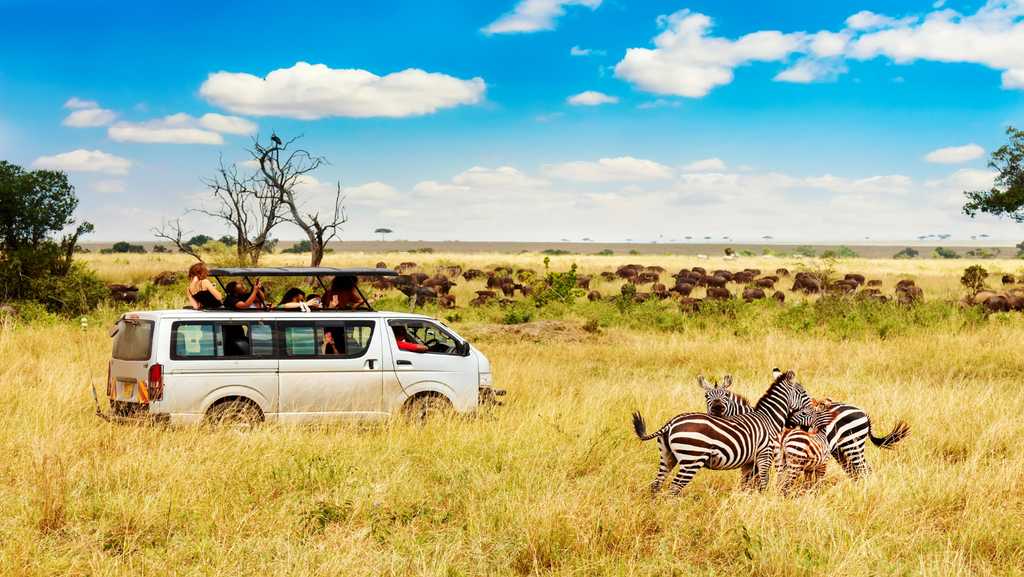Embarking on a Wildlife Safari: Exploring Nature’s Wonders Up Close
A wildlife safari is an exhilarating adventure that takes you deep into the heart of nature, offering a rare opportunity to witness the breathtaking beauty and diversity of the animal kingdom. It is a journey filled with awe-inspiring moments, where you can observe wildlife in their natural habitats, learn about their behaviors, and develop a profound appreciation for the delicate balance of ecosystems. Let’s explore the enchanting world of wildlife safaris, the destinations they offer, and the transformative experiences they provide.
Immersing Yourself in Nature
A wildlife safari takes you far beyond the confines of everyday life, immersing you in the pristine wilderness of national parks, game reserves, and protected areas. These destinations provide a haven for a wide range of species, from majestic elephants and graceful big cats to elusive primates and colorful birdlife. As you venture into these natural habitats, you’ll witness animals in their element—grazing, hunting, playing, or even raising their young.
Destinations for Wildlife Safaris
- African Safaris: Africa is renowned for its iconic wildlife safaris, with countries such as Kenya, Tanzania, South Africa, Botswana, and Namibia offering extraordinary experiences. Witness the Great Migration in the Serengeti, track the “Big Five” in Kruger National Park, or explore the vast wetlands of the Okavango Delta.
- Asian Safaris: In Asia, countries like India, Sri Lanka, and Nepal provide opportunities to encounter majestic creatures like tigers, elephants, and rhinoceros. Explore the national parks of Ranthambore, Yala, or Chitwan, and be captivated by the rich biodiversity and cultural heritage of these regions.
- South American Safaris: South America offers diverse landscapes and unique wildlife encounters. Head to the Amazon rainforest in Brazil or Peru, where you can spot colorful macaws, playful river dolphins, and elusive jaguars. The Galápagos Islands in Ecuador are also a haven for unique species found nowhere else on Earth.
- Australian Safaris: Australia is a haven for unique and diverse wildlife. Explore the Great Barrier Reef, where you can snorkel alongside vibrant marine life, or venture into the Outback to witness kangaroos, koalas, and emus in their natural habitat.
The Magic of Wildlife Encounters
A wildlife safari provides more than just a glimpse of wildlife; it offers transformative experiences that leave a lasting impact. Witnessing animals in their natural environment invokes a sense of wonder and respect for the natural world. The sounds of the wilderness, the sight of animals in their natural behavior, and the vastness of the landscapes all combine to create an immersive experience like no other.
- Conservation and Education: Wildlife safaris often emphasize conservation efforts and education, allowing visitors to understand the importance of preserving habitats and protecting endangered species. Local guides and rangers share their knowledge, shedding light on the intricate ecosystems and the challenges they face.
- Photography and Capturing Memories: Wildlife photography enthusiasts find safaris to be a paradise for capturing stunning images of animals in their natural habitats. Whether you’re an amateur or professional photographer, the opportunities to capture remarkable moments are endless.
- Cultural Immersion: Many wildlife safari destinations offer opportunities to immerse yourself in the local culture and traditions. Interact with indigenous communities, visit local villages, and learn about their relationship with the natural world.
Responsible Wildlife Tourism
It is crucial to prioritize responsible wildlife tourism to ensure the well-being of both wildlife and their habitats. Here are some guidelines to follow:
- Choose Ethical Operators: Select reputable tour operators and lodges that prioritize sustainable practices, respect animal welfare, and support local communities.
- Respect Wildlife and Their Environment: Keep a safe distance from animals, avoid interfering with their behaviors, and follow the guidelines provided by your guides or rangers.
- Minimize Your Environmental Impact: Practice Leave No Trace principles by avoiding littering, reducing waste, and respecting the natural surroundings.
- Support Conservation Efforts: Contribute to conservation initiatives by donating to local organizations, participating in community projects, or supporting wildlife conservation research.
Conclusion
A wildlife safari is an extraordinary journey that allows you to connect with nature, witness remarkable wildlife encounters, and gain a deeper understanding of the importance of conservation. It offers an escape from the every day and a chance to embrace the wonders of the natural world. Embarking on a wildlife safari is not just a vacation—it is a life-enriching experience that inspires a sense of wonder, appreciation, and responsibility toward our planet’s precious biodiversity. So, venture into the wilderness, immerse yourself in the beauty of wildlife, and create memories that will last a lifetime.
Share this content:


